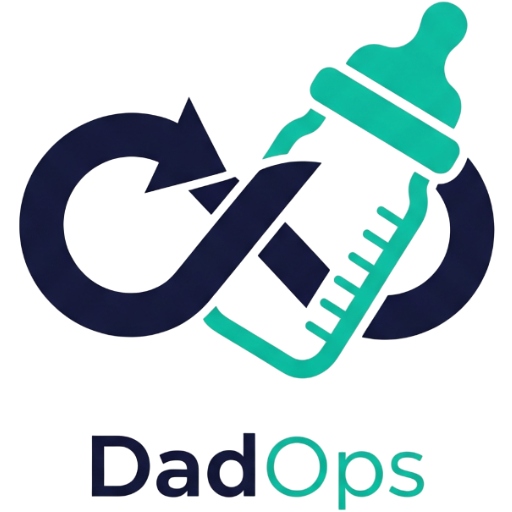Got a toddler and another one on the way? It’s like leveling up in a game of parental multitasking. Arm yourself with strategies: stick to schedules for your little one, ease them into sharing, and stock up on snacks (for both you and them!). Enlist the help of friends and family to keep things running smoothly. Don’t forget to catch your breath with some strategic downtime, too—there’s more to uncover in this family adventure!
Key Points
- Establish predictable schedules to support toddler development and ease transitions.
- Gradually introduce concepts like sharing and gentle touch to prepare for the new sibling.
- Communicate clearly with your partner to balance responsibilities and maintain harmony.
- Enlist family or friends for additional support and distraction for the toddler.
- Prioritize both children’s needs based on their developmental stages for effective resource management.
Understanding the Needs of Your Current User

Before you plunge into the chaos of a second deployment, let’s talk about your current user—the toddler. Pregnant with a toddler in tow? It’s like loading a new software while managing an ongoing system.
As dad of two, you’ll need some second child preparation strategies. Here’s the cheat code:
- Routine Maintenance: Keep schedules predictable. Toddlers thrive on knowing what’s next.
- Bug Fixes: Address tantrums calmly. Remember, they’re just tiny humans with big feelings.
- System Updates: Introduce changes gradually. New toys or books can ease the transition. Building secure attachments at this stage can contribute to your toddler’s emotional stability and resilience. Considering the importance of safety in your choices for baby gear can also provide peace of mind as you prepare for the second child’s arrival.
- It’s crucial to maintain connections with loved ones during this phase, as sustaining a support network can positively influence both your personal well-being and professional success.
Preparing for the New Deployment
When you’re gearing up for a new deployment, aka Baby 2.0, preparation is key. Think of it as installing an update that requires a bit of system downtime. Here’s your checklist:
- Inventory Check: Ensure the toddler’s gear is ready for a share. Bonus points if it doesn’t look like it survived a hurricane.
- Training Drills: Begin toddler’s crash course in “gentle touch” and “sharing is caring.”
- Energy Reserves: Stockpile caffeine and snacks like your life depends on it—because it might.
- Communication Protocols: Establish clear signals with your partner. Winks, nods, or semaphore, whatever works!
It’s also essential to consider the comfort and safety of baby carriers when planning outings with both children, as these factors can greatly impact your experience.
Additionally, it’s important to familiarize yourself with effective burping techniques to help prevent discomfort for your infant, ensuring a smoother feeding experience for both parent and child.
Remember, maintaining consistent sleep schedules for the whole family can greatly enhance overall well-being during this transitional period.
Balancing Resource Allocation

Managing your toddler and the impending arrival of Baby 2.0 is like running a two-ring circus, except you’re the lone ringmaster, and your audience is demanding snacks. Balancing resource allocation becomes your daily act.
To keep your sanity, try these tricks:
- Prioritize: Decide whose needs come first, Baby 2.0’s cries or Toddler 1.0’s tantrums. In the early stages of development, focus on setting priorities that build a solid foundation for both children.
- Schedule: Time is your tightrope. Plan toddler naps around feeding times.
- Share: Toys, snacks, attention—teach your toddler the art of sharing early.
- Adapt: Be ready for surprise acts. Flexibility is your best tool.
- Organize: Implement efficient diaper storage solutions to prevent clutter and ensure easy access, contributing to a stress-free environment for both you and your children.
- Communicate: Just as with paternity leave policies, clear communication with your partner about expectations and responsibilities can help maintain harmony in the household.
Implementing a Robust Support Strategy
As you prepare for the grand debut of Baby 2.0, you’ll need a support strategy stronger than a toddler’s grip on their favorite toy. Here’s your playbook:
- Tag-Team Tactics: Enlist family or friends for toddler distraction duty. Aunts and uncles make great entertainment units.
- Toy Rotation Protocol: Introduce new toys at strategic intervals. Keeps the current user engaged, reducing system overload.
- Snack System: Stockpile healthy snacks. Toddlers operate best on full batteries.
- Divide and Conquer: Share responsibilities with your partner. Balance is key.
- Keep an eye on ongoing monitoring to ensure that your toddler’s needs are met promptly, minimizing disruptions similar to how colic in systems requires attention to maintain efficiency.
- For added readiness, consider preparing an ultimate hospital go-bag to alleviate some of the stress associated with labor and delivery, ensuring you are well-prepared for the big day.
- By exploring alternative methods for C-section delivery, you can also prepare for the birthing process in a way that minimizes risks and enhances recovery.
Anticipating and Mitigating Downtime

Envision this: you’re in the middle of a delightful game of “why is the sky blue” with your toddler when suddenly, the new deployment demands attention. You’re now a juggler in the circus of parenthood, balancing curiosity and chaos. Ensuring a smoke-free environment can contribute to a healthier atmosphere for your child, reducing potential hazards in their living space.
Anticipating downtime is essential, so here’s a quick list to keep things running smoothly:
- Schedule: Set up playdates or naps during peak deployment times.
- Diversions: Stockpile toys and snacks, your toddler’s version of system resources.
- Backup: Call in reinforcements—grandparents or neighbors work wonders.
Remember that a sane maintainer is crucial for the success of any project, as it ensures that both personal and professional responsibilities are managed effectively. It’s crucial to recognize common health concerns early on, as understanding when to seek medical advice can help ensure the well-being of both your toddler and the new arrival.
Frequently Asked Questions
How Do I Handle Simultaneous Tantrums From Both the Toddler and the Newborn?
When tackling simultaneous tantrums, stay calm and prioritize. Address your toddler first, since they understand more. Distract with toys or stories. Then, soothe the newborn with gentle rocking or a pacifier. You’ve got this, super dad!
What Is the Best Way to Pacify a Jealous Toddler During Diaper Changes?
You can distract your toddler with a special toy or a fun game during diaper changes. Involve them by making them your “assistant,” letting them hand you wipes or other supplies to keep them engaged.
Can I Automate Bedtime Stories to Free up More Time for Diaper Duty?
You can’t fully automate bedtime stories, but you can streamline them. Use audiobooks or pre-record yourself reading their favorites. This frees up some time for diaper duty while still keeping their bedtime routine special.
How Do I Manage Snack Time When Both Users Have Different Dietary Requirements?
You’ve got this! Create a snack station with separate bins for each user. Label them clearly, ensuring toddler-safe and baby-approved options. Rotate snack options weekly to keep it exciting and meet dietary needs effortlessly.
Is It Possible to Upgrade the Toddler’s Patience Settings Before the New Arrival?
Absolutely, you can upgrade your toddler’s patience. It’s like installing a new app—daily practice, praise, and setting small challenges. Remember, it’s a toddler, not a computer, so expect some glitches. Humor goes a long way!




